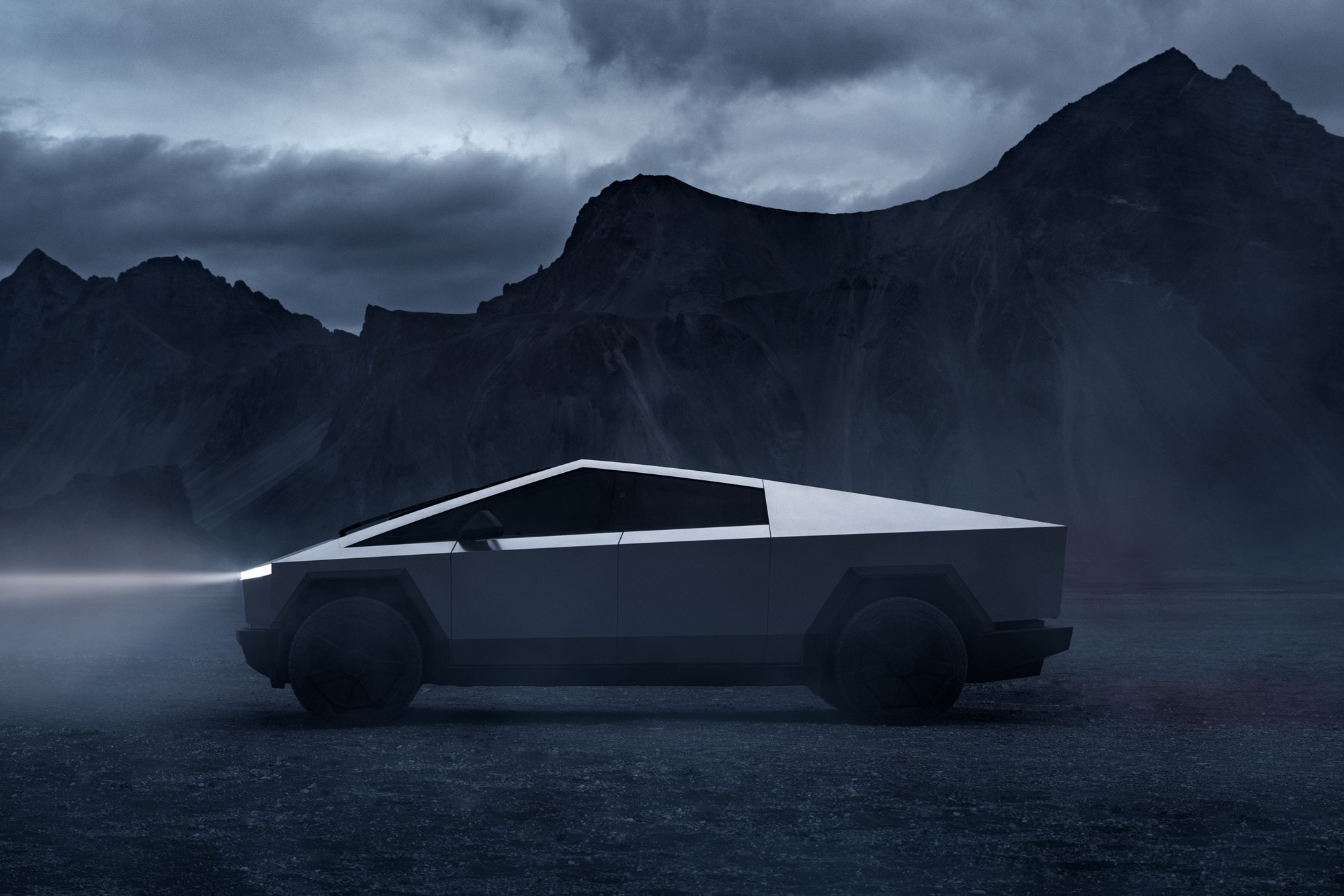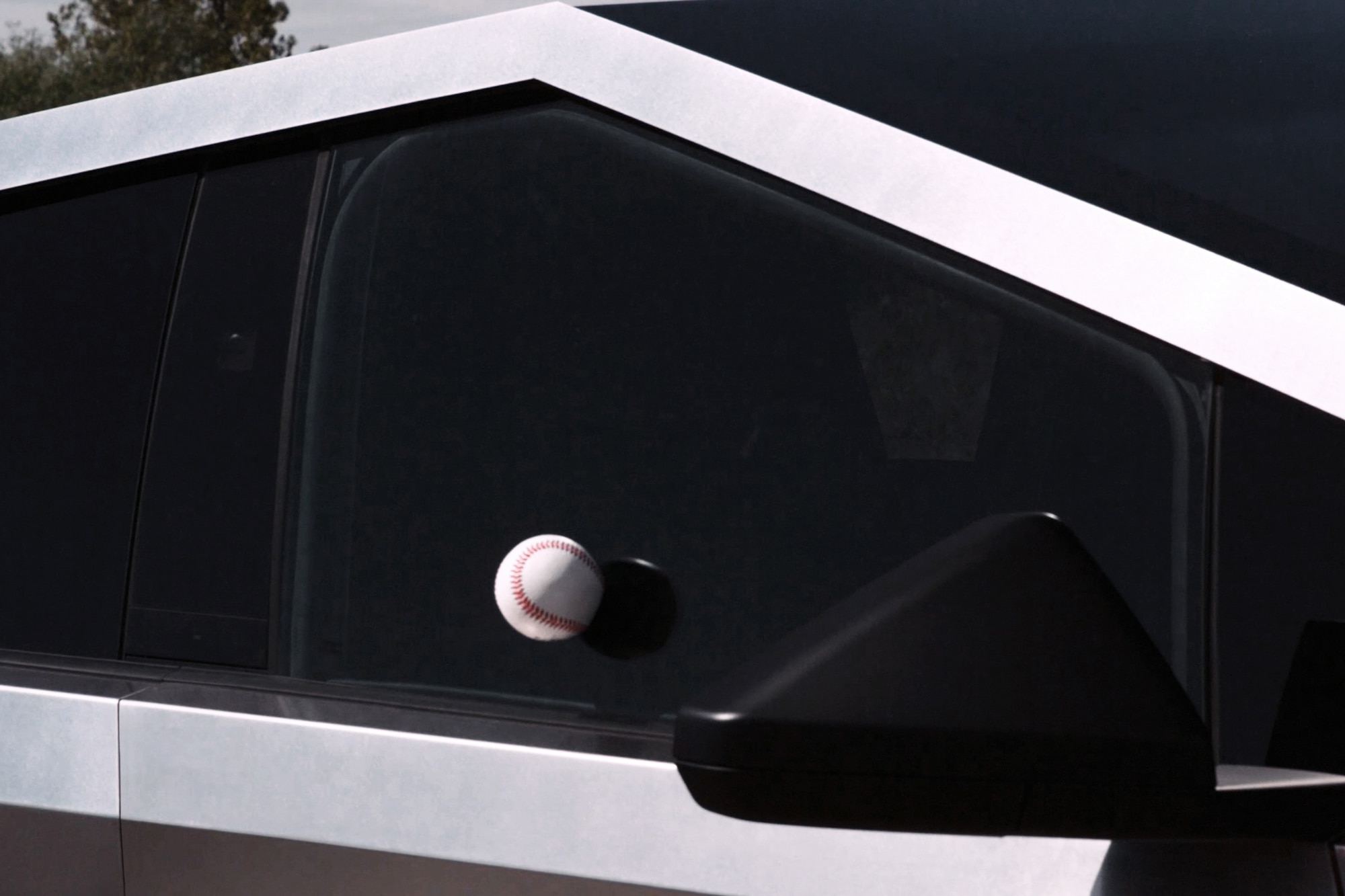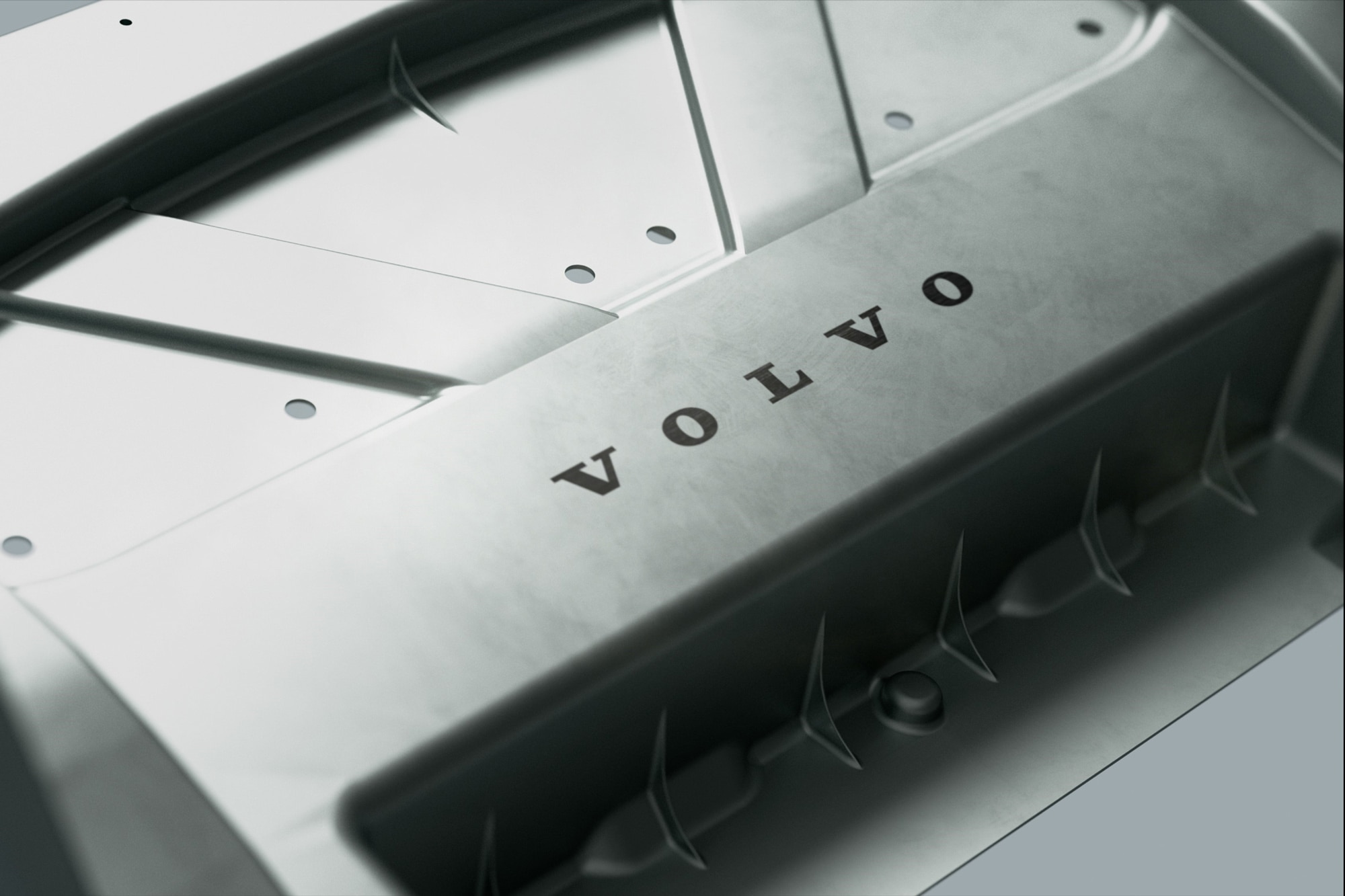5 Tesla Cybertruck Technologies That Might Be in Your Next New Car
Big parts, spare batteries, and faster communication could spread to other autos.
 Tesla
Tesla
You can't say the Tesla Cybertruck isn't different. Its wedge-meets-brick design is the first thing you're likely to notice, with plenty of other interesting details lurking beneath its stainless steel exterior. But are many of these features mere novelties, or will they permeate the auto industry?
Some of the new ideas baked into Tesla's first pickup are likely to appear on other brands' cars, trucks, and SUVs.
Stainless Steel Is an Old Idea Made New Again
Tesla is hardly the first to put stainless steel body panels on a vehicle. Automakers have flirted with the idea for nearly a century, and the DeLorean Motor Company made it a production reality — albeit a short-lived one — in the early 1980s with its eponymous sports car. But production difficulties and quality concerns inevitably put an end to those projects.
Tesla, however, believes the time is ripe — and the tech is there — to make a fresh attempt. Its Cybertruck, despite its edginess, isn't exactly a reborn DeLorean. For one, it's not a Hollywood time machine a la "Back to the Future'' films. The Cybertruck also uses thicker-than-standard sheetmetal panels that create an ultra-hard stainless steel exoskeleton that gives the vehicle strength. The proprietary-blend 300-series alloy is reportedly the same steel used on the SpaceX Starship.
Such hard material is difficult to shape, which might explain — at least in part — the electric pickup's flat panels and straight lines. Early in the Cybertruck saga, the prototype's stainless steel panels were 3 mm thick, which is much beefier than the 0.7- to 1-mm thickness of the average steel vehicle's sheetmetal. In the production version, that thickness came down to 1.8 mm for the doors and 1.4 mm for other panels.
The body is raw stainless with no clearcoat, so it can and will scratch and is even susceptible to corrosion and staining from road grime. It should, however, resist dings and dents.
Tesla doesn't claim that the Cybertruck body panels are bulletproof, although the company's head Elon Musk has said on X, formerly known as Twitter, that the material can stop .45-caliber and 9-mm rounds.
Other automakers aren't immune to the hype of the Cybertruck, and some may decide to jump on the stainless bandwagon — or at least attempt it. Whether those trials will make it to production is less certain, as the material is difficult to work with and does not lend itself to conventional vehicle design or manufacturing. Its main strength is strength, but there are other ways to achieve that in a modern car. And people like paint.
 Tesla
Tesla
Armor Glass Is Resistant to Shattering
In a now-infamous vignette from the Cybertruck's 2019 unveiling, Tesla chief designer Franz von Holzhausen hit the prototype's 3-mm door skin with a sledgehammer to show its dent resistance. He then threw a metal ball at the front window to show how it, too, would resist damage. Except it didn't. The glass shattered, and Musk audibly swore.
The explanation from Musk is that the preceding sledgehammer blows to the door broke the base of the Armor Glass, causing it to shatter when hit with the ball. Tesla now calls the glass shatter resistant, and claims that it can resist the impact of a baseball at 70 mph or Class 4 hail.
This feature isn't as novel as Tesla makes it seem. Other strong glass options already exist in the automotive world. Corning makes a version of its Gorilla Glass that's optional on the Jeep Wrangler and Gladiator windshield from the factory.
Tesla's patent for its Armor Glass says it withstands impacts up to 2 joules of energy with no damage 90% of the time, while Gorilla Glass can withstand impact energy up to about 3.5 joules on average. Gorilla Glass is also used in some sports cars — including the Ford GT, McLaren 720S, and some Porsche RS models — because it's lighter than conventional automotive glass.
Etherloop Could Replace the Industry-Standard CAN Bus
As cars get increasingly complex, there's more and more data flowing within the vehicle between more and more nodes. To address this, Tesla came up with a new data-network architecture that's similar to Ethernet — a type of wired network commonly used in homes and businesses. The company calls it Etherloop, and it replaces the multiple Controller Area Network, or CAN, buses used in today's cars and trucks. CAN is the industry standard for communication between the various modules in a car.
There are several advantages to this. First, the Etherloop requires fewer wires, which means less weight. Second, it can transfer data more quickly. Third, the simplified process means less latency. It's also easier to debug, as all data passes through one vehicle-wide network.
Etherloop, or something like it, could spread throughout the industry. As with many automotive tech evolutions, this will require participation and cooperation from suppliers, who will need to redesign their communications modules to accommodate this new network type. Automakers will likely watch this particular tech closely.
 Volvo
Volvo
Gigacasting Makes Big Parts in One Shot
Tesla rarely misses an opportunity to take credit for innovation, even if it wasn't actually the innovator. Such is the case with gigacasting, a term that was coined by Idra, a Tesla supplier, for the process of using big die-casting machines to make very large parts. The machines are referred to as gigapresses or megapresses, depending on who's selling them.
Instead of making a bunch of parts and joining them together with welds, mechanical fasteners, or adhesive, a gigapress makes one large part, say, for a front or rear portion of the chassis. This reduces the number of components in the vehicle as well as the number of steps and the amount of time required to assemble the vehicle.
Tesla uses a gigapress to make portions of the Cybertruck's body structure.
Another thing gigacasting reduces is the repairability of the resulting vehicle. If that large die-cast part is damaged, it's difficult if not impossible to repair it. In many cases, the entire part will need to be replaced.
But such concerns don't seem to be top of mind for automakers, plenty of whom — including Toyota, Volvo, Cadillac, Volkswagen, Hyundai, and Ford — are already following Tesla's lead and investing in gigacasting.
A Spare Battery Keeps You Moving
For the Cybertruck, Tesla plans to offer a bed-mounted range-extender battery. As with secondary fuel tanks offered on some diesel trucks, this one makes a lot of sense — but only if it can be removed. Lugging around a second heavy battery for occasional use carries a big weight and efficiency penalty, not to mention the lost cargo and payload capacity in the bed.
Tesla hasn't provided many details on the range extender aside from an expected range extension of 130 miles for the all-wheel-drive model and 120 miles for the three-motor Cyberbeast trim.
Written by humans.
Edited by humans.
 David Gluckman
David GluckmanDavid has years of experience as a writer and editor for print and digital automotive publications, including Car and Driver and Road & Track. He can parallel-park a school bus, has a spreadsheet listing every vehicle he's ever tested, and once drove a Lincoln Town Car 63 mph in reverse. When not searching for the perfect used car, he can be found sampling the latest gimmicky foodstuffs that America has to offer.
Related articles
View more related articles